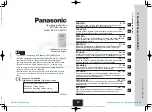
User Manual
Airbridge cBTS3612 CDMA Base Station
System Description
2 Hardware Architecture
2-7
Baseband subsystem is physically located in the baseband subrack, powered by
power supply subsystem (in the power subrack). Boards generate their own 3.3V,
1.8V power through the distributed power supply module.
The configuration of baseband subrack (including board position) is as shown in
Figure 2-3.
0
B
C
I
M
1
B
C
I
M
2
B
C
P
M
3
B
C
P
M
4
B
C
P
M
5
B
C
P
M
6
B
C
P
M
7
B
C
P
M
8
B
R
D
M
B
R
D
M
B
C
K
M
B
C
K
M
B
R
D
M
B
R
D
M
B
C
P
M
B
C
P
M
B
C
P
M
B
C
P
M
B
C
P
M
B
C
P
M
B
R
D
M
B
R
D
M
10
11 12 13 14 15 16 17 18 19 20 21
9
Figure 2-3
Baseband subrack configuration
Baseband subrack supports the following boards:
l
BCIM: BTS control interface module, to be inserted in E1 interface slot,
providing Abis interface for connection with BSC and supporting E1/T1
transmission. In the coming version, BCIM slot can also accommodate BEOM
(BTS Electric-Optical Module) to support STM-1 optical transmission.
l
BCPM: BTS channel process board, processing the data of CDMA forward
channel and reverse channel.
l
BRDM: BTS resource distribution module, connecting BCPM and RF module,
realizing the control of resource pool for BCPM.
l
BCKM: BTS control & clock board, providing clock for BTS system and realizing
the control of BTS system resource.
2.2.2 Control & Clock Module (BCKM)
I. Overview
BCKM is located in the baseband subrack of BTS. BCKM performs two major
functions: main control module (MPU, Main Processing Unit) and clock module (CLK,
Clock) functions. Here MPU performs Abis interface signaling processing, O&M
management, while CLK provides reference clock signals for the whole BTS system.
Main functions of BCKM:
l
MPU module provides BTS system with a hardware control platform, on which
the operating system and system software are running to implement control
and management tasks of BTS system.
















































